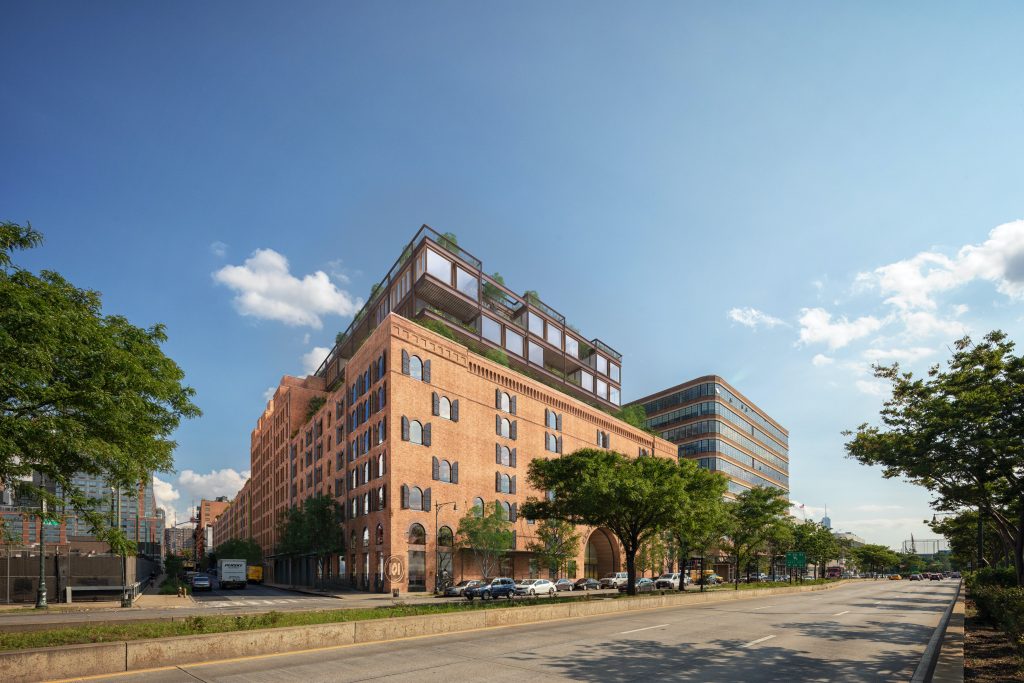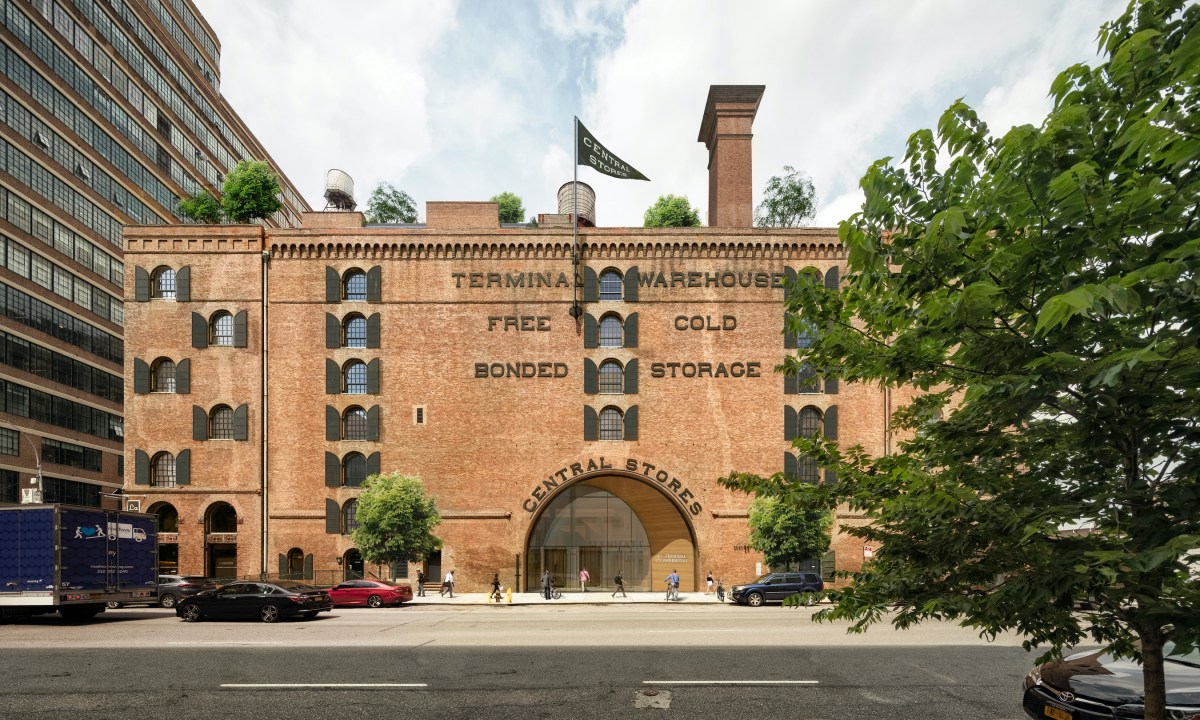The historic Terminal Warehouse building in West Chelsea is set to undergo a restoration and major makeover under plans that the NYC Landmarks Preservation Commission unanimously approved this week.
The building dates back to the 19th century and is on the block from 11th to 12th Avenues between West 27th and 28th Streets. Developers L & L Holding and Normandy Real Estate Partners bought the building, which has 1.2 million square feet, in 2018 for $880 million.
They plan to work with COOKFOX architectural firm in converting 500,000 square feet of storage space into modern offices.
Built in 1891 by Terminal Warehouse Company, the buildings were once a hub for shipping goods in and out of the city, with easy access to the nearby Hudson River, streets and freight line along 11th Avenue. Its use for shipping declined when the nearby High Line opened in the 1930s. (Changes on the waterfront would later doom the High Line, which — after years of abandonment — was transformed into a public park.)
In recent times, the Terminal Warehouse was home to the Tunnel nightclub, which operated from 1986 to 2001, and housed what was once the biggest mini-storage facility in the U.S.
Now, the building continues to largely be a storage facility, and also has office and commercial space.
The revitalization plan will include creating an outdoor courtyard at the building’s center, along with several landscaped terraces. Shops and restaurants will be added inside the building, and its train tunnel, with a twin set of tracks that runs the 670-foot length of the building, will be restored and have original wood, brick and rails uncovered.
The large recessed arched entrances at 11th and 12th Avenues will also be restored as part of the plan.

The plan will also preserve and use as much of the original wood in the building as possible, the developers said, while following modern building codes. Research has dated some of the wood back centuries, as far back as the 1500s.
“The Terminal Warehouse project has been a labor of love from the start,” said Rick Cook, founding partner of COOKFOX Architects, after the LPC approved the plan. “Thank you to the Commission for their diligence in helping us to preserve this critical and storied piece of Manhattan’s West Side waterfront infrastructure and create a new, high-performance workplace for the future.”
Work on the project is scheduled to start this spring, and continue in phases over the next two-plus years, according to a spokesperson for the developers.


































